How to Create an Advertising Media Kit for your Podcast
With the explosion in popularity for podcasts, it seems like nearly everyone has started one these days. Launching your own show has never been easier thanks to tools like Anchor.fm and Zencastr (among others). That said, many people who launch a podcast do so with the idea that they’re going to strike it rich by just yakking into a microphone. Unfortunately, it’s not quite that easy. However, it is easier than you might think. If you have a solid advertising media kit that showcases your podcast and its impact among audiences, sponsors will definitely want to work with you. And that’s when the money starts rolling in.
What is an Advertising Media Kit?
Put simply, it’s a short packet of information that you can provide advertisers and potential sponsors with all the details of your show. You want to make it as polished as possible because these folks see dozens, if not hundreds, of media kits per week. So you want to make sure yours stands out (for the right reasons).
There are some specific elements that your advertising media kit will want to include, kind of industry standards that all advertisers look for.
- who you are and what your podcast is about
- statistics, such as number of episode downloads, unique users, etc.
- other affiliated shows or networks
- other partnerships and sponsors
- listener demographics
- what ad types you offer and how much they cost
- your contact info
If you can put these together in a single concise package, you will have an easily updated document that can evolve as your podcast does. Which will then bring in even more partnerships and sponsors and advertisers.
Putting It Together to Send
And in terms of what you actually send out, even putting together a deck of slides in PowerPoint or Google Slides will let you have a well-designed document. Also, if you haven’t ever used Canva before, we highly suggest that. You can not only make your podcast art using the tool, but also a very beautiful advertising media kit.
Note: if you do end up using a tool like Canva and a pre-designed template, be sure to customize it some with your own art and assets and colors so that it represents you and doesn’t look like a carbon copy of someone else’s show just in case they chose the same template. For this article, we’re using a premade template from Canva to mock up an advertising media kit for a fictionalized podcast and host.
1. Who You Are and What You Do
Or, in another way, what is your mission statement? Why did you create this podcast, and what do you bring to the space that others don’t? It doesn’t have to be a long statement, but it does need to encapsulate what your podcast and brand stands for. Something like this:
The Superfun Happytime Podcast strives to have an open and honest discussion about the reality of working in the games industry while providing tips for improving narrative across all media.
It doesn’t have to be anything complicated, just say what it is you’re trying to do. And in terms of what you actually send out, you can just load up Canva, pick out a template and paste it right in there.
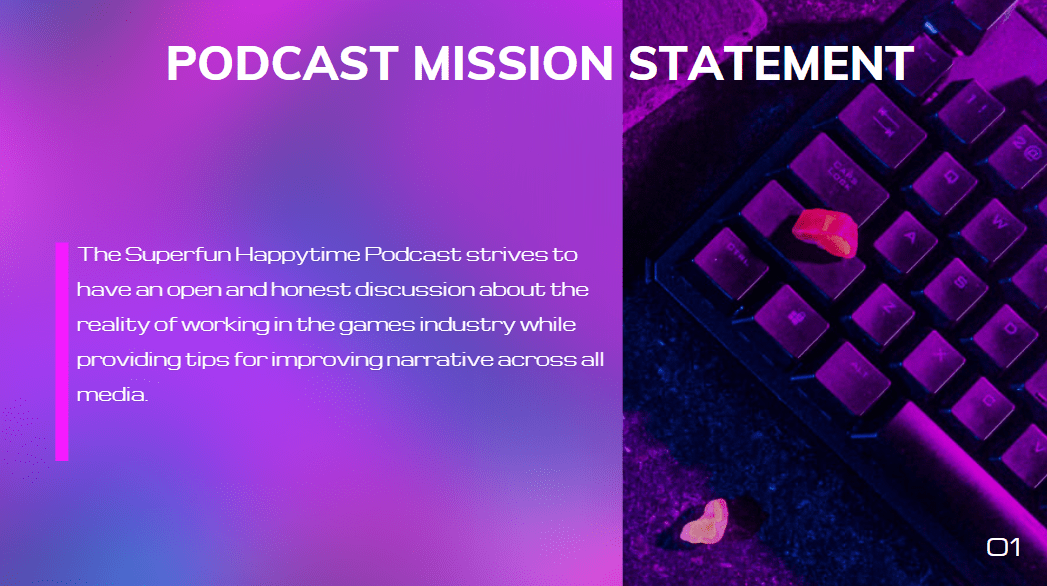
Also be sure to include any relevant information about yourself and other hosts, especially relevant information about past work or experience that would make advertisers and partners want to work with you.
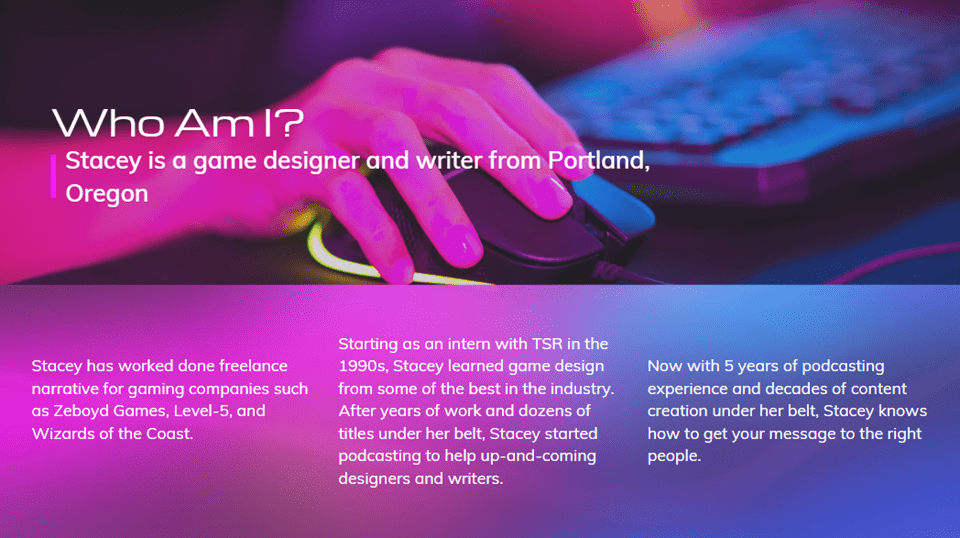
2. Statistics
This might be the most important element of your advertising media kit. Your potential partners and sponsors want to know exactly who they are advertising to. And how many of them there are.
So you are going to need to have a solid idea of your number of downloads, generally within a 4-6 week period from an episode’s release. Also include total downloads within that time (which includes back episodes, too), and any demographic information you can get. Some hosts like Anchor do give demographic information, as does Spotify for Podcasters.
In general, you’re going to want to know as much as you can about your audience. Such as region, country, age, gender, etc.
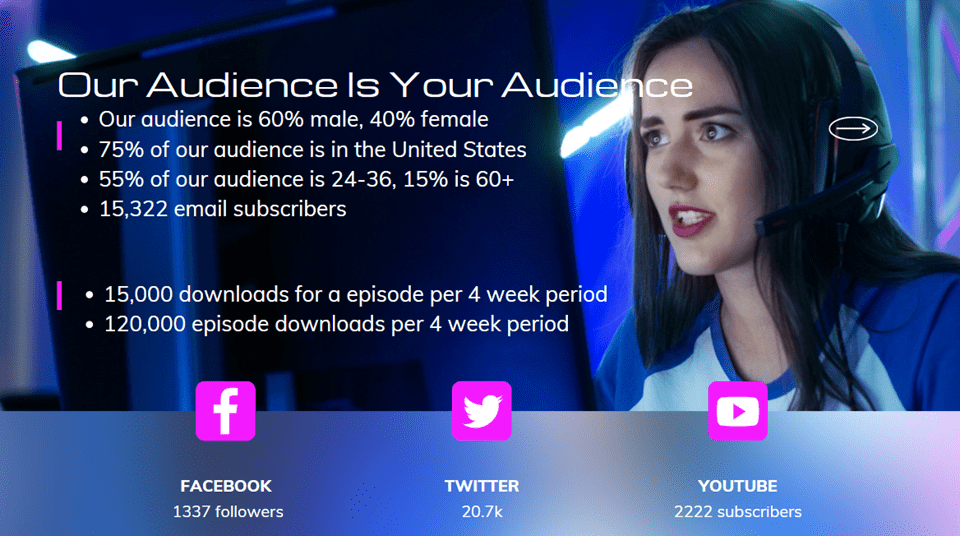
This is also the place where you include any email subscribers you might have, website statistics, social stats, and so on. You want to make yourself as appealing as possible, reaching the most audience members possible across all platforms.
3. Partnerships and Affiliations
Next up, you will want to show who you’re working with and who you have worked with in the past. If you can show that you’ve worked with other companies, it’s kind of like a reference page to a resume. If you haven’t had any partnerships yet, don’t worry. You can just exclude this slide until you have found a few podcast sponsors to list.
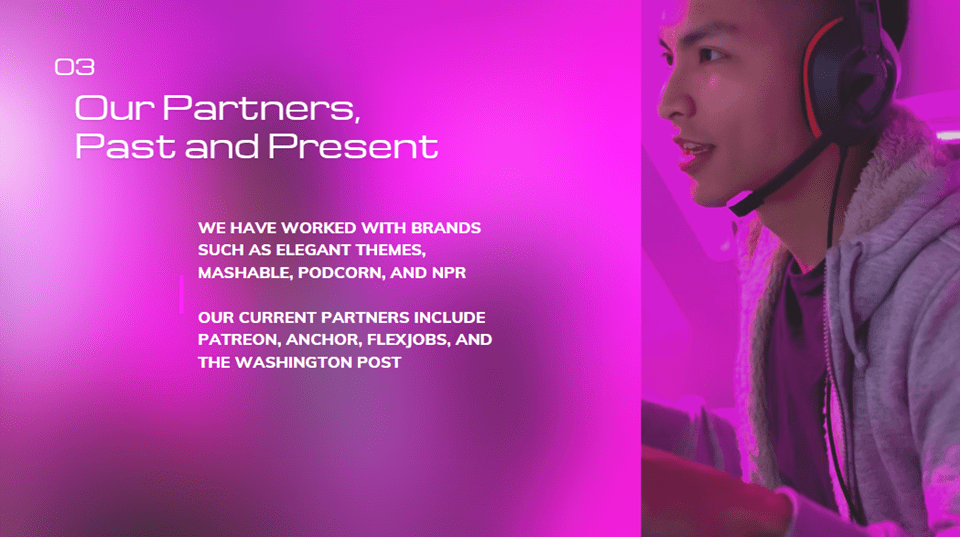
And if you’re affiliated with any other networks or shows, these kinds of slides are a great place to include them. If you have any statistical information about them, include that, too. However, it’s also fine just to show that your reach is not just a single property, but multiples.
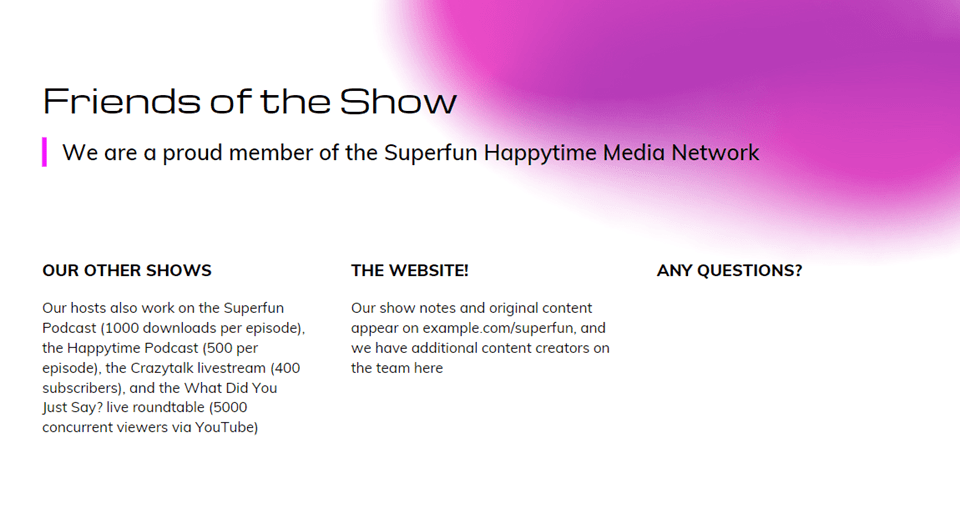
4. Ad Types and Rate Sheet
The most important part of your media kit is your rate sheet. Generally, podcast advertising sponsorships are done by CPM, meaning that you get paid X amount per 1,000 listens. Host-read ads are the most expensive, as they are the most genuine and effective. You can include pre-recorded ads, too, which can be inserted wherever you want. Generally before, at the mid-point, or after the show (pre-roll, mid-roll, or post-roll).
Additionally, you can work with sponsors to offer giveaways or have them come on your show for an interview or you work an episode topic around their product (or product type). For instance, you can offer to do an episode about your favorite audiobooks that’s sponsored by a particular author’s brand, where you’re creating normal content for your show, but you can then tie the topic back to your sponsor as you go through the episode.
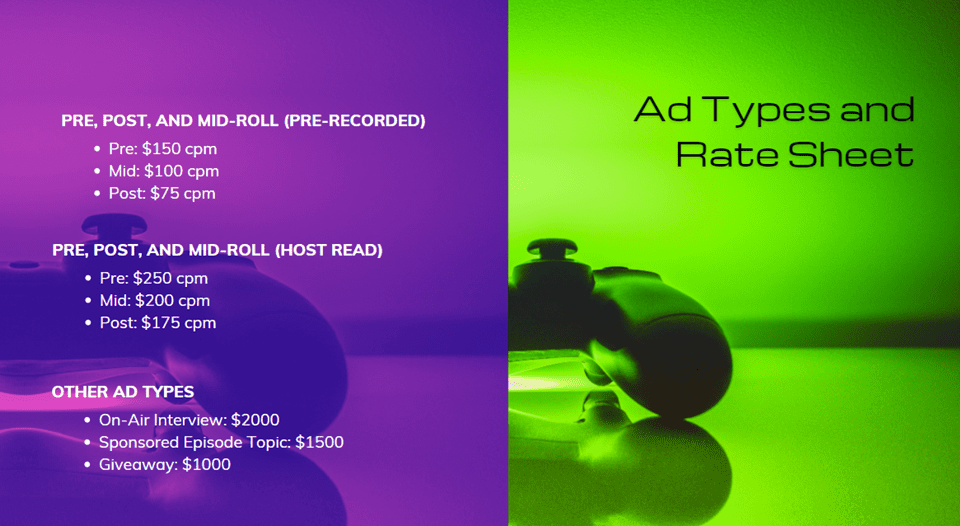
The possibilities for ad types is nearly endless, and often partners and advertisers will work with you to find something that works for both of you.
Contact Information
And finally, these advertisers and partners need to know how to contact you. So be sure to list any way that they can reach you. But be sure to only include ways that you check and respond to regularly.
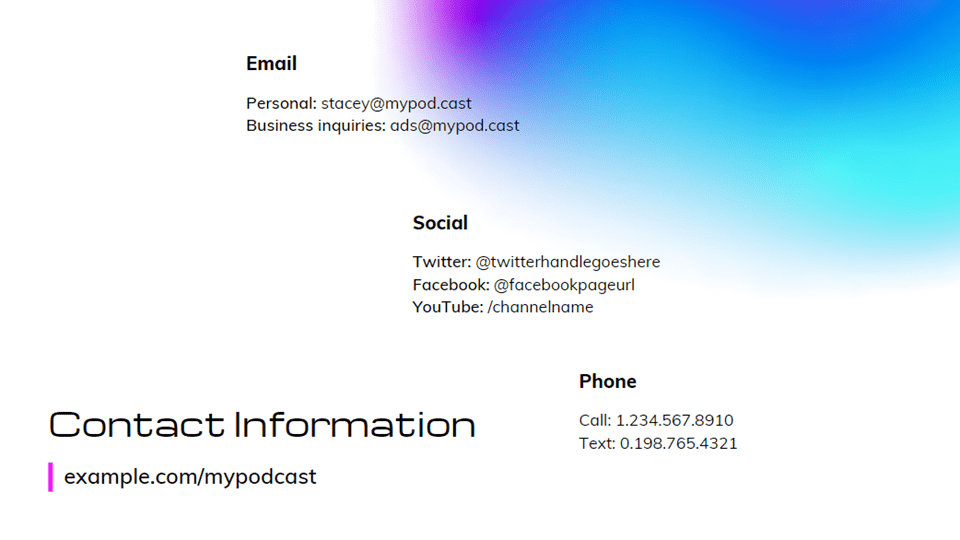
You do not want a potential sponsor to email you at an address you check once a month. Or to give you a phone call if you never answer calls. So be sure to include a variety of ways so that they can contact you with as little friction as possible.
Wrapping Up Your Advertising Media Kit
Needless to say, putting together a rate sheet and advertising media kit can be a daunting task. After all, it’s a single document that represents your entire brand. However, if you put in the time and energy to craft it to show to advertisers how great you are to work with, it can be one of the best boons for your brand you can imagine.
Does your podcast have an advertising media kit? Why or why not?
Article featured image by PureSolution / shutterstock.com